Sustainability
Horst Weidenmüller: "We are serious about this"
The music industry has been striving for more sustainability for …
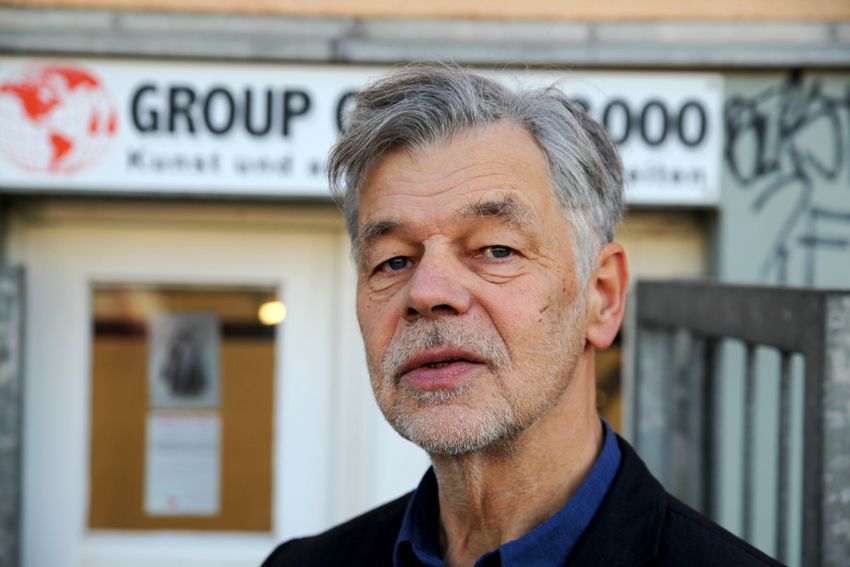
Tom Albrecht was the first environmental officer at TU Berlin in the 1990s. Today he is a curator and runs the Gallery for Sustainable Art in the city. What can art contribute to the sustainability debate? A visit to Berlin's hotbed for sustainability issues.
Strolling along Leuschnerdamm from Moritzplatz in Berlin, it's hard to imagine that this is where the death strip separated the districts of Kreuzberg and Mitte until 32 years ago. On the Kreuzberg side of the street, house number 19, a sign immediately catches my eye. ‘Group Global 3000’ is written on it in thick red letters, along with ’Galerie für nachhaltige Kunst’ (Gallery for Sustainable Art). The deeply framed, whitewashed windows don’t let me see inside, and that makes me curious. What is there to see down there? Through a double door, a small staircase leads down to a basement brightly lit by fluorescent tubes - the gallery.
A piece of wood in the shape of a charred club dangles from the ceiling. "That's the 'Fossil Club,' you can easily bump your head on it," says a tall man who could be ‘Tatort’ actor Max Ballauf's older brother. He found the charred log at a campfire in the children's farm around the corner. Most of the art objects here are made of found or recycled materials. My interviewee has already passed the first sustainability test.
From No Future to Fridays for Future
The man with the mottled gray hair is Tom Albrecht, curator and founder of the gallery. Tom Albrecht is no stranger to sustainability. In 1991 he became the first environmental officer at the TU Berlin. He came to Berlin as early as 1972, the very year that the Club of Rome, the first association globally of alarmed climate experts, warned us that resources were running out. In the 1970s and 1980s, Berlin was still a different city. Back then it wasn’t Fridays for Future, but No Future. New Wave and punks with a nihilistic worldview were the dominant youth cultures around Berlin's SO36. No debates about curbing consumption and global warming, but empty highways because of the first oil price crisis in the Middle East and the first discussions about the future of the forest. The Greens were on their starting blocks, in sneakers that were not yet recyclable. There were vast numbers of squatted houses and plenty of vacant lots full of clay, stones and broken plates to the soundtrack of the band Ton Steine Scherben - not exactly sustainable either.
In many places, the sustainability discourse is simply too overloaded with facts. There is a lack of encounters and images. Art creates such images
Tom gestures to me, inviting me to look around. Since 2012, he and a team have been running the Gallery for Sustainable Art on a volunteer basis: three exhibition rooms, a toilet, a kitchenette, and a chamber for exhibition supplies, hidden by a blind. "It's a bit cramped here," Tom admits. But we can get 60 people in here.
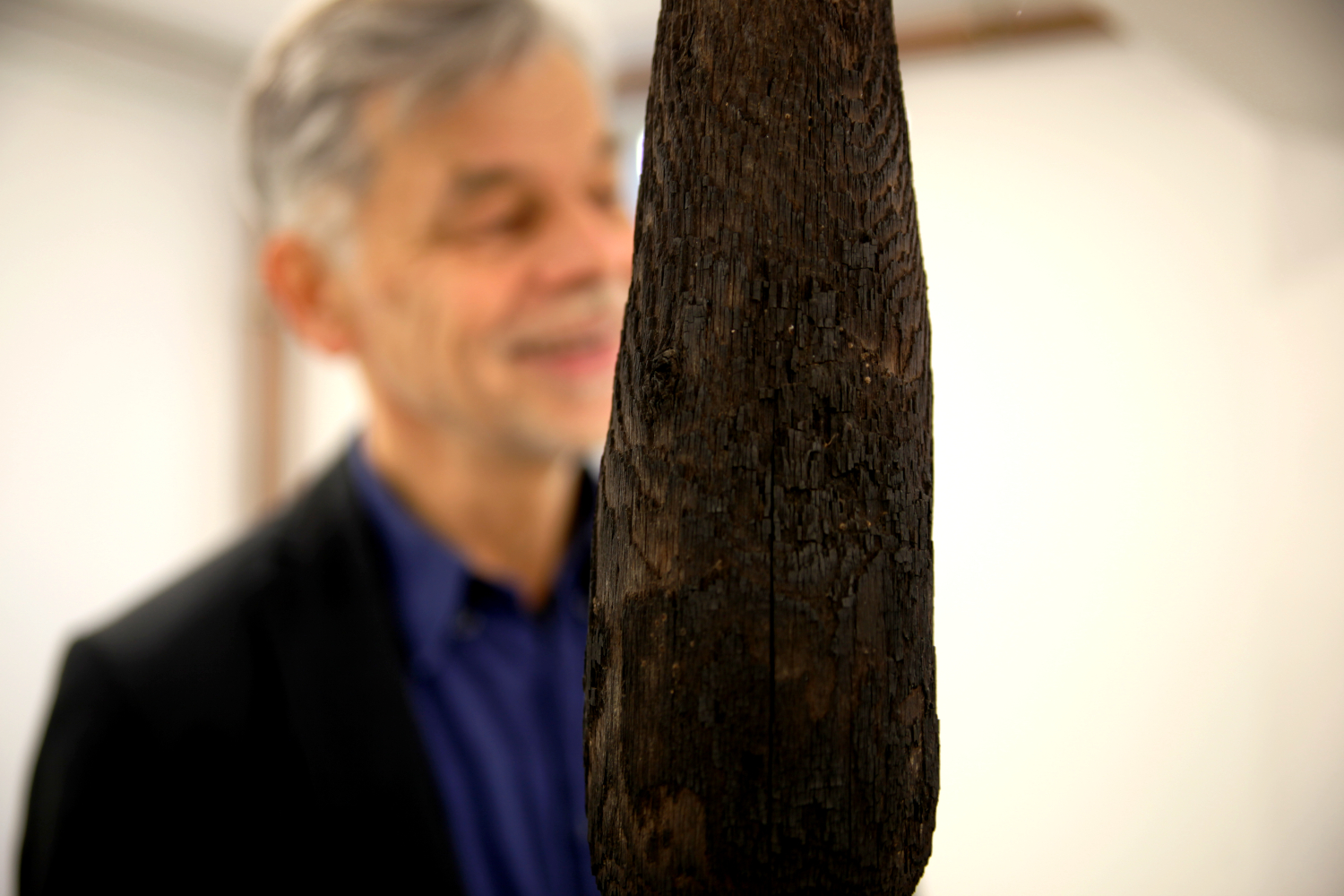
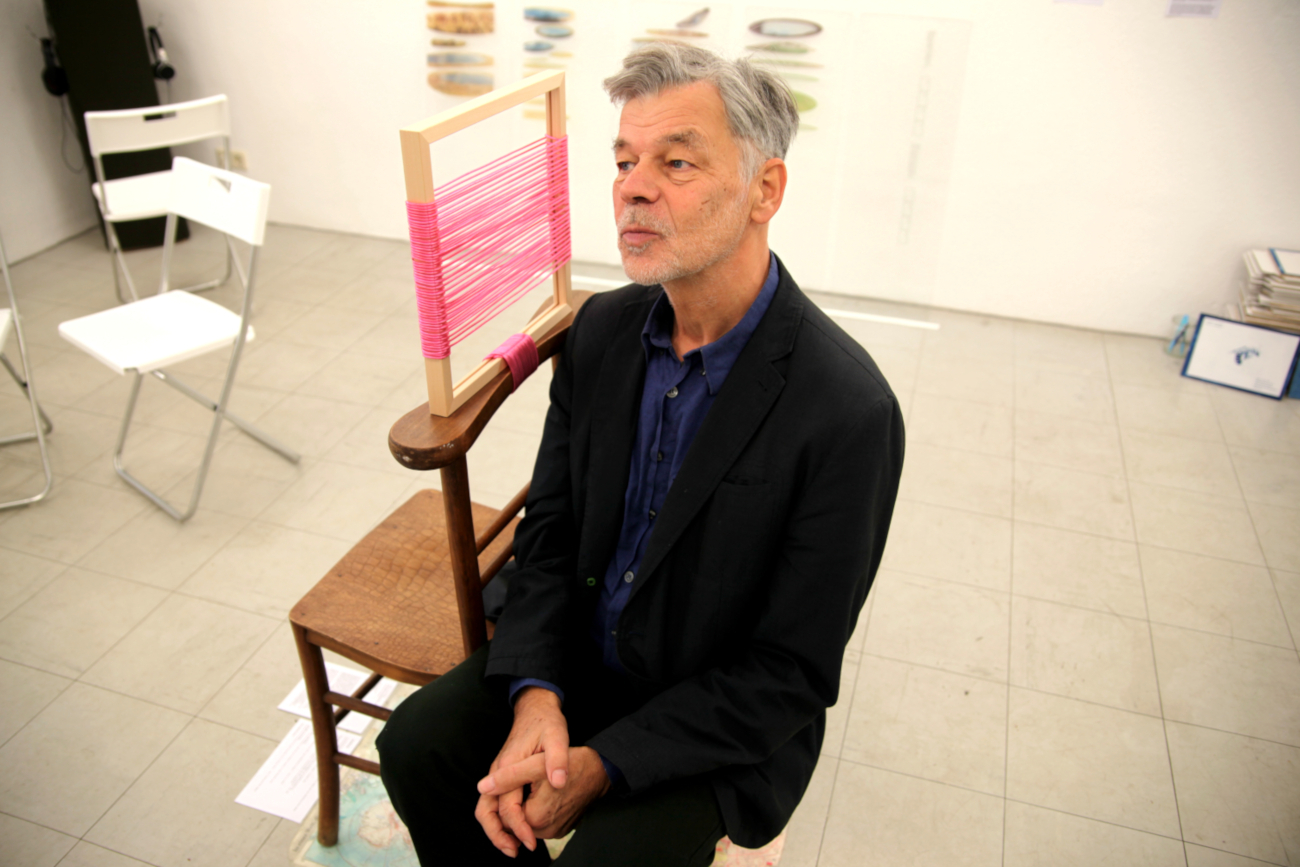
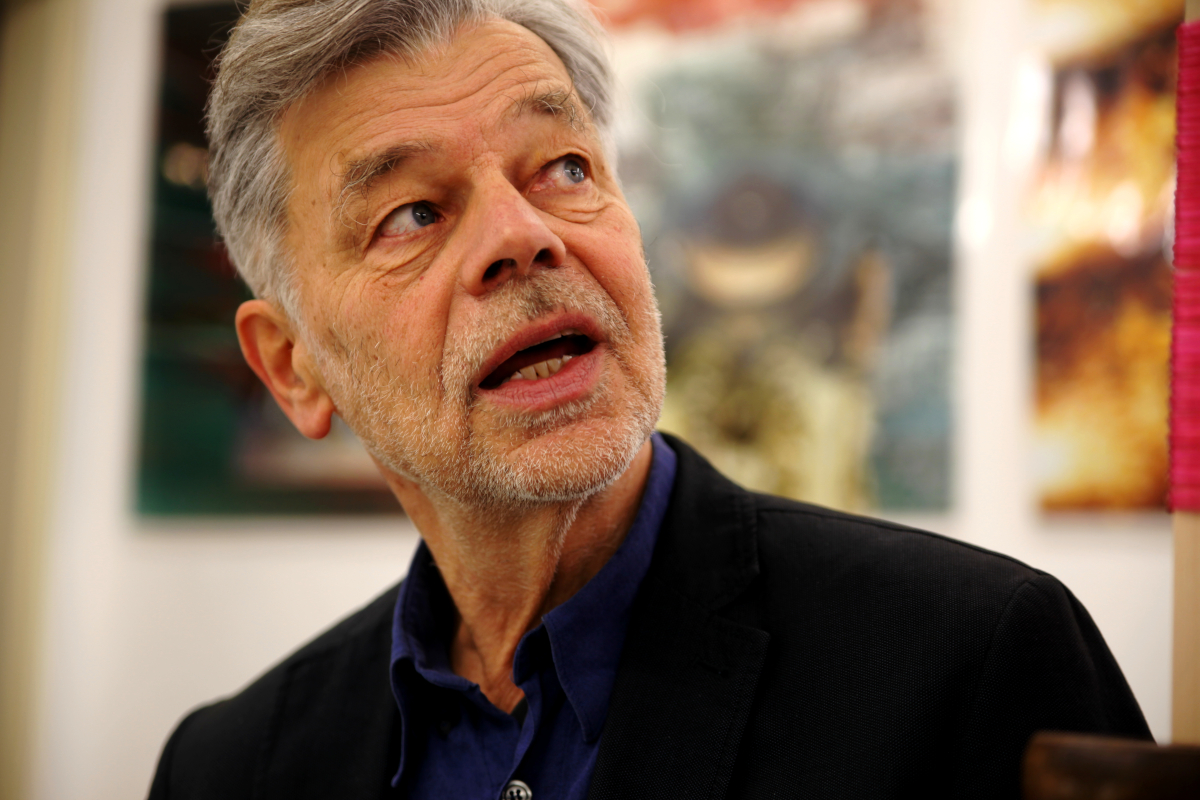
One of his exhibitions was called Artists for Future, and another was on Fossil Addiction. Exhibits hang on the walls and are placed around the room. The Fossil Club, for example, on which I constantly bump my head while walking through the space. The club bounces back like a boomerang. "Man believes that what he leaves behind has no consequences," Tom says. Coming into contact with the club, he says, is a reminder that we should live more ecologically. Another exhibit by Lioba von den Driesch is the Confessional for Ecological Sins. It consists of two chairs placed back-to-back, next to which is a stool with a gum machine. "The Confessional for Ecological Sins is ready," Tom says with a mischievous grin, offering himself to me as confessor. "The average carbon emission in Germany is 11.6 tons per capita per year. A transatlantic flight from Düsseldorf to New York alone produces 3.65 tons of CO2. We act as if we can go on like this forever," says the confessor. At the Gallery for Sustainable Art, you can confess your airline sins and meat cravings - the worst environmental sins - be ashamed of them and apologize with a handshake, as if there were a tomorrow again. On top of that, for a symbolic two cents, you can pull a carbon certificate out of the gumball machine. And a small book contains psalms for absolution. For example, "My children and grandchildren sanctify the means." Since each of us emits carbon, Tom says, humor is a good way to address our contradictions about sustainability without being like missionaries about it. Dialogue works better with humor.
The project space as social sculpture
But there’s nothing humorous about sustainability. Tom recalls how the discourse has unfolded over the years. First there was the United Nations' Brundtland Report in 1987, which is considered the beginning of the global discourse on sustainable development, then came the alarming Rio Conference in 1992, and currently it's the UN's 17 Sustainable Development Goals, which are displayed everywhere in Tom's gallery and are meant to give a scientific underpinning to art objects. Just like in the next room. Videos run here non-stop. In one video, artist Keeley Haftner looks into the camera with a deadpan expression. She picks up a bottle of water and fills it with colored glitter, shakes it vigorously and drinks. She bravely takes the first sips of the dark glittering swill. Then she has to burp, takes it from her lips, then drinks some more. The struggle with the glitter shows on her face, the martyr's facial expression slips. Heroically, she continues to drink until the bitter end. After 5 minutes of self-torture, she holds an empty 1-liter bottle up to the camera. Done. "The video visualizes the dominance of microplastic in our oceans, how living creatures consume it, and so how it enters our bodies through the food chain," Tom interprets the video, which runs on continuous loop.
The current discourse focuses on the ecological dimension, but it's also about the reality of people's lives: about social sustainability. Project spaces are door openers for this
We continue through the gallery. Tom talks as if he were standing at a lectern. He seems at home as an imparter of knowledge. Originally from Düsseldorf, he grew up in close proximity to Joseph Beuys - Beuys is his great artist idol. He himself studied mechanical engineering and later completed a degree in social sciences. He only ever did art on the side. "To this day, I regret not having studied art," says the curator. Today, he uses objects, installations, photographs, videos, words and actions to express his ideas. For him, team-led project spaces - like his gallery - embody the concept of social sculpture. In keeping with Beuys' concept of art, they pursued the aspiration of shaping and forming society through art. You could even call it social sustainability.
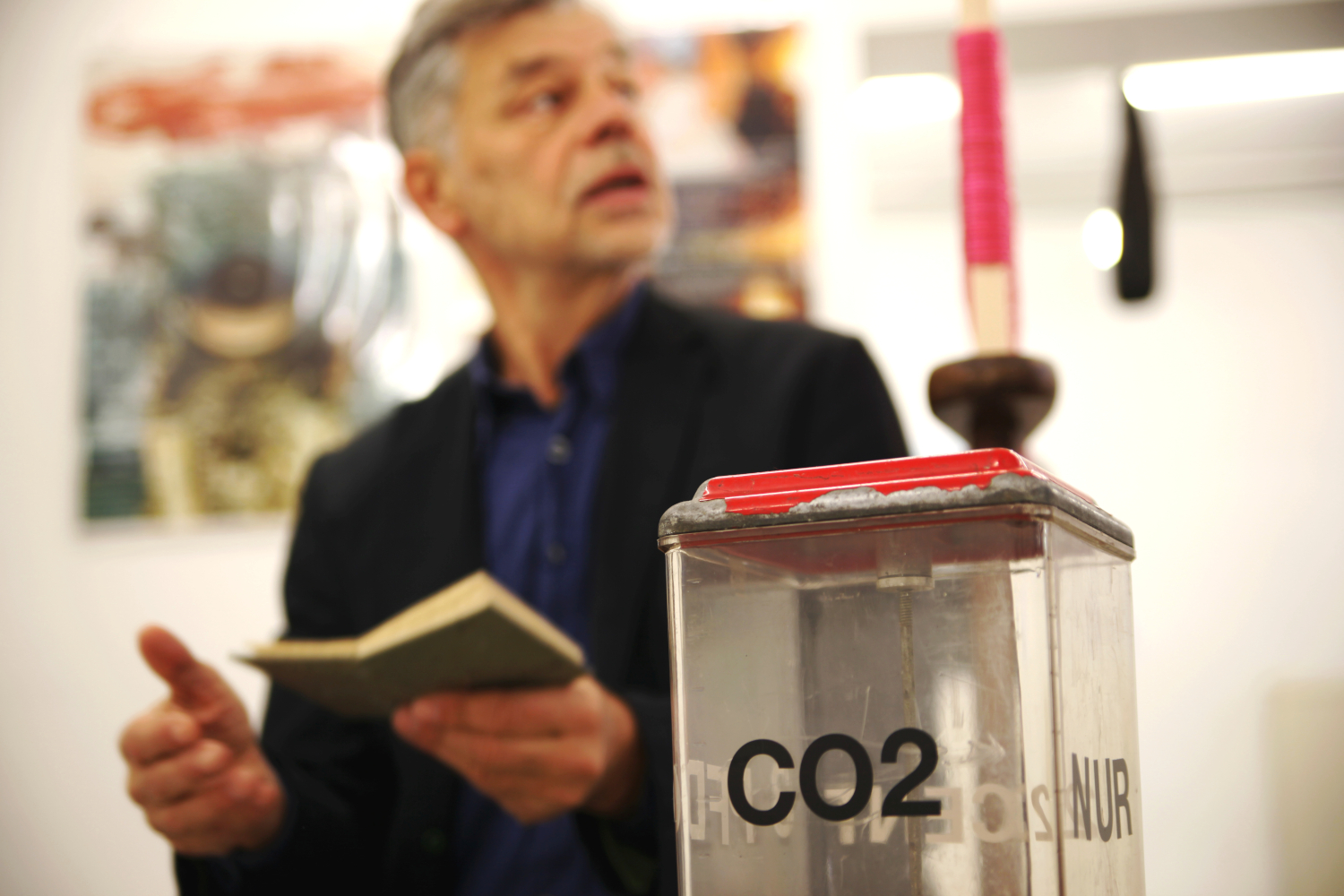
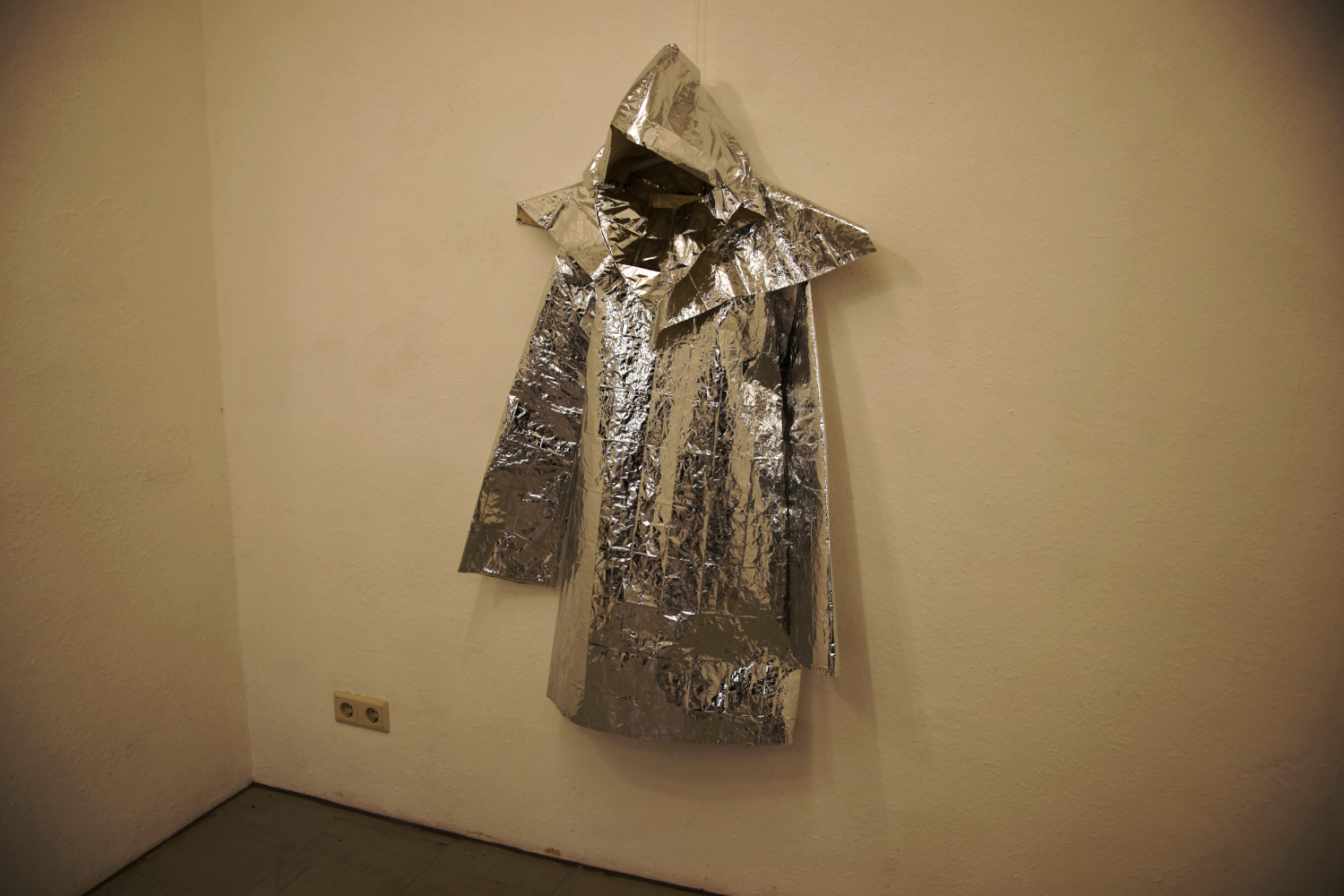
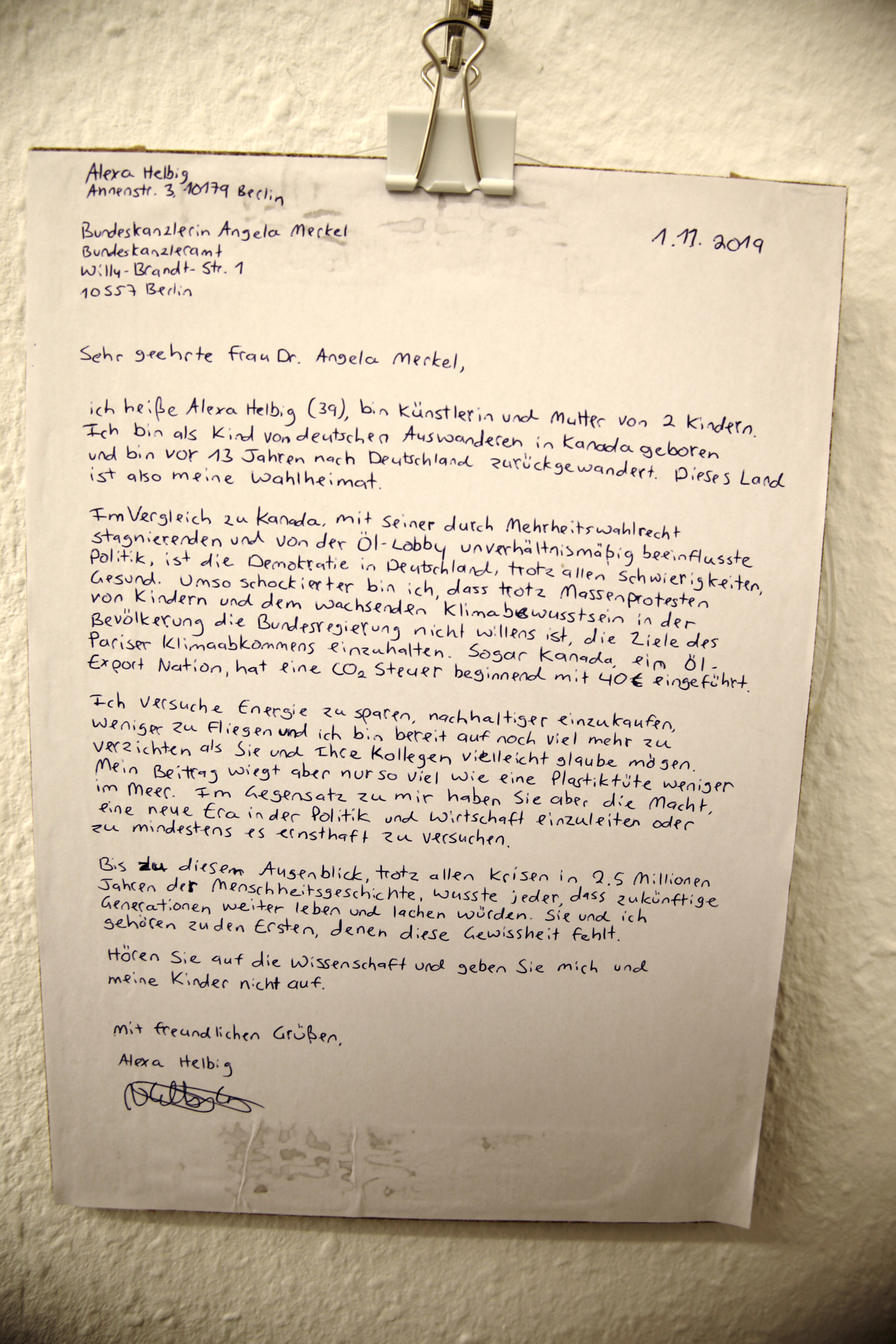
The project space Gallery for Sustainable Art is a novelty in the city. There are around 450 galleries in Berlin, plus 150 project spaces that have been struggling to survive for years because of the lack of space. But there is not one that deals exclusively with sustainability. Why is that, I ask Tom? And what else can art contribute to the current sustainability debate anyway that Fridays for Future or others can't? "The sustainability discourse is simply too fact-laden in many places," says Tom. "There's a lack of encounters and images." That's what art creates. Environmental activists like Extinction Rebellion, for example, have learned a lot from performance art. Art is always about staging, something environmental activists cleverly put to good use. "But the current discourse focuses on the ecological dimension," says Tom. The gallery, on the other hand, is about the reality of people's lives: about social sustainability in all its aspects.
We know the facts and yet we buy an SUV and fly to Thailand or Malle twice a year. For me, this is typical addictive behavior
The addiction to fossil treats
The logo of the gallery depicts two globes one behind the other and ironically demonstrates his aspiration to think big. The name Group Global 3000, GG3 for short, is indeed an "allusion to global companies with big names”. But it's meant seriously: "We live as if we had a second world." Group Global 3000 is not primarily about selling art objects. It's about artistic encounters and performative doing. As a non-profit association and non-commercial gallery, financed by donations, he comes up with the rent himself every month, Tom says. He is now a pensioner. If he had to work a job as well, he would not be able to run the gallery with the same intensity. Another important financial injection, he says, was the project space award he won in 2016 from the Berlin Senate Department for Culture and Europe. "I'm still happy to be able to rent the space. But there are desires and appetites that are becoming more and more apparent," Tom says. A glance across the street is enough to see what else has changed besides the loud traffic: all the many new buildings with glass balcony railings that have sprung up there. Tom himself lives above the gallery in the old building.
Creating art and making connections, commenting on the madness of growth, linking art with science and inviting the neighborhood to talk - that's what Tom Albrecht is all about. One of the last subjects he tackled was "fossil addiction." He says, "We know the facts, we know about our harmful behavior, and yet we buy an SUV and fly to Thailand or Majorca twice a year. To me, that's typical addictive behavior. There’s an itching in our lungs, but hey, what the heck." Tom’s analysis is matter-of-fact, dispassionate, and it's easy to see how he worked at TU Berlin. Since its founding, well over 200 artists have exhibited in the gallery, and the address database contains over 1000 contacts.
But do project spaces in Berlin have a long-term future in the city? "That remains to be seen," says Tom. The study ‘Project spaces: vital but fragile heart of the art scene’ by sociologist Séverine Marguin a few years ago demonstrated that the existence of project spaces in Berlin is under threat. The findings showed that the majority of project spaces in Berlin have to get by on less than 5,000 euros a year. That is not sustainable. So Tom is worried about the future of the gallery, although he holds all the trump cards as far as themes are concerned. The subject of ecology, with all its social and economic implications, is far from exhausted. And a Gallery for Future is just what this city needs.
Do you know it? Our new magazine on sustainability and culture
You want to have the new CCB Magazine for free? [Click here]
Category: At home with...
Also a good read
Subscribe to our monthly newsletter!